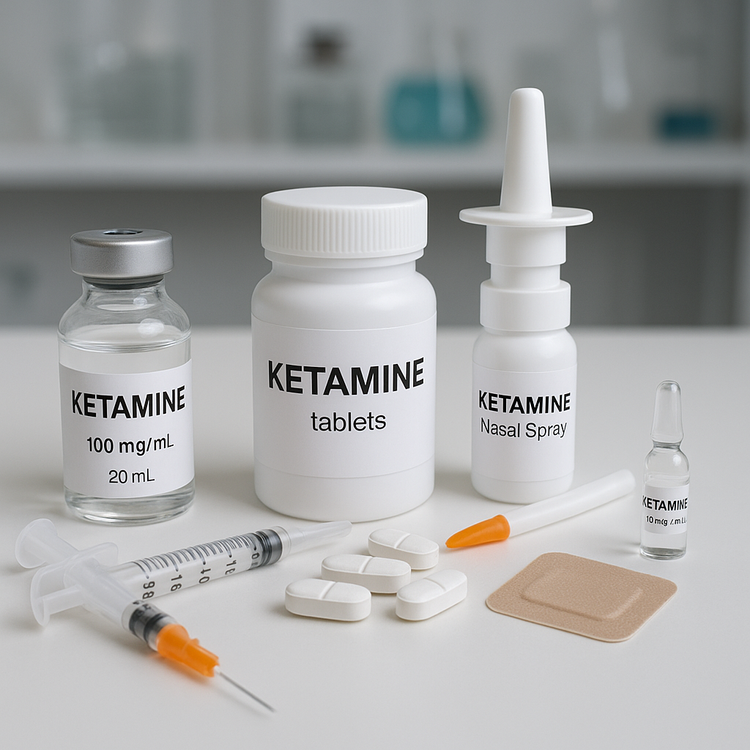All the Ways Ketamine Can Be Given
November 9, 2025 2025-11-09 8:42All the Ways Ketamine Can Be Given

All the Ways Ketamine Can Be Given
Ketamine’s versatility is one of the reasons it has become such an important therapy for mood and pain conditions.
Different ways of giving ketamine, known as routes of administration, affect how quickly it works, how long it lasts, and what safety measures are needed.
Below you’ll find a clear, patient-friendly overview of all major options, from intravenous infusions to emerging transdermal systems.
1. Intravenous (IV)
- How it works: Direct infusion into a vein.
- Bioavailability: ~100%.
- Benefits: Precise control of dose; fastest onset; used in most clinical studies and settings.
- Risks: Requires IV setup and monitoring; IV site complications, bruises.
2. Intramuscular (IM)
- How it works: One-time injection into a large muscle.
- Bioavailability: ~93%.
- Benefits: Simple and fast; no IV line needed.
- Risks: Once injected, cannot adjust dose mid-session; muscle pain or swelling; site reactions.
3. Subcutaneous (SQ)
- How it works: Injection under the skin’s fatty layer.
- Bioavailability: Slightly lower than IM ~90%.
- Benefits: Less invasive; used occasionally for pain management.
- Risks: Slower onset and more variable absorption.
4. Intranasal (IN)
- FDA-approved form: Spravato® (esketamine).
- Bioavailability: ~45–50%.
- Benefits: Needle-free; reliable onset; supervised use in certified clinics; covered by insurance.
- Risks: Transient nasal irritation; requires post-dose observation when prescribed as Spravato.
5. Oral (Swallowed)
- Bioavailability: ~20–25%.
- Benefits: Convenient and cost-effective; suitable for structured at-home programs.
- Risks: Unpredictable absorption; may cause nausea.
6. Sublingual / Buccal (Under Tongue or Cheek)
- Bioavailability: ~25–32%.
- Benefits: Better absorption than swallowed tablets; favored for telehealth programs for ease of use.
- Risks: Bitter taste, oral numbness, variable absorption.
7. Rectal
- Bioavailability: ~25–30%.
- Benefits: Useful when oral or nasal routes are not possible.
- Risks: Limited acceptance, irritation, variable results; mainly pediatric or procedural use.
8. Dermal / Transdermal (Creams or Patches)
- Status: Experimental for chronic pain; not used for mood disorders yet.
- Benefits: Non-invasive and steady absorption potential.
- Risks: Skin reactions; unproven dosing consistency.
Comparison at a Glance


